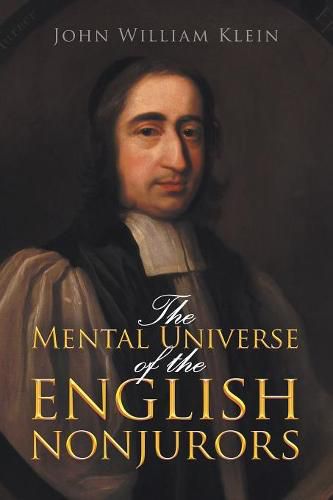Readings Newsletter
Become a Readings Member to make your shopping experience even easier.
Sign in or sign up for free!
You’re not far away from qualifying for FREE standard shipping within Australia
You’ve qualified for FREE standard shipping within Australia
The cart is loading…






This title is printed to order. This book may have been self-published. If so, we cannot guarantee the quality of the content. In the main most books will have gone through the editing process however some may not. We therefore suggest that you be aware of this before ordering this book. If in doubt check either the author or publisher’s details as we are unable to accept any returns unless they are faulty. Please contact us if you have any questions.
The Glorious Revolution of 1688, which pushed James II from the throne of England, was not glorious for everyone; in fact, for many, it was a great disaster. Those who had already taken an oath of allegiance to James II and to his heirs and lawful successors now pondered how they could take a second oath to William and Mary. Those who initially refused to swear the oath were called Nonjurors. In 1691, Archbishop Sancroft, eight bishops, and four hundred clergy of the Church of England, as well as a substantial number of scholars at Oxford and Cambridge, were deprived, removed from their offices and their license to practice revoked, for their refusal. This nonjuring community over time adopted hybridized ideas, long-embraced and called out by the times and circumstances. Five paradigms shaped the English Nonjurors’ mental universe: a radical obedience, a Cyprianist mentality, using printing presses in place of the pulpits they had lost, a hybridized view of time, and a global ecumenical perspective that linked them to the Orthodox East. These patterns operated synergistically to create an effective tool for the Nonjurors’ survival and success in their mission. The Nonjurors’ influence, out of proportion to their size, was due in large measure to this mentality; their unique circumstances prompted creative thinking, and they were superb in that endeavor. Those five ideas constituted the infrastructure of the Nonjurors’ world. This study helps us to see the early eighteenth century not only as a time of rapid change, but also as an era of persistent older religious mentalities adapted to new circumstances, and the Nonjurors were brilliant at this adaptation.
$9.00 standard shipping within Australia
FREE standard shipping within Australia for orders over $100.00
Express & International shipping calculated at checkout
This title is printed to order. This book may have been self-published. If so, we cannot guarantee the quality of the content. In the main most books will have gone through the editing process however some may not. We therefore suggest that you be aware of this before ordering this book. If in doubt check either the author or publisher’s details as we are unable to accept any returns unless they are faulty. Please contact us if you have any questions.
The Glorious Revolution of 1688, which pushed James II from the throne of England, was not glorious for everyone; in fact, for many, it was a great disaster. Those who had already taken an oath of allegiance to James II and to his heirs and lawful successors now pondered how they could take a second oath to William and Mary. Those who initially refused to swear the oath were called Nonjurors. In 1691, Archbishop Sancroft, eight bishops, and four hundred clergy of the Church of England, as well as a substantial number of scholars at Oxford and Cambridge, were deprived, removed from their offices and their license to practice revoked, for their refusal. This nonjuring community over time adopted hybridized ideas, long-embraced and called out by the times and circumstances. Five paradigms shaped the English Nonjurors’ mental universe: a radical obedience, a Cyprianist mentality, using printing presses in place of the pulpits they had lost, a hybridized view of time, and a global ecumenical perspective that linked them to the Orthodox East. These patterns operated synergistically to create an effective tool for the Nonjurors’ survival and success in their mission. The Nonjurors’ influence, out of proportion to their size, was due in large measure to this mentality; their unique circumstances prompted creative thinking, and they were superb in that endeavor. Those five ideas constituted the infrastructure of the Nonjurors’ world. This study helps us to see the early eighteenth century not only as a time of rapid change, but also as an era of persistent older religious mentalities adapted to new circumstances, and the Nonjurors were brilliant at this adaptation.